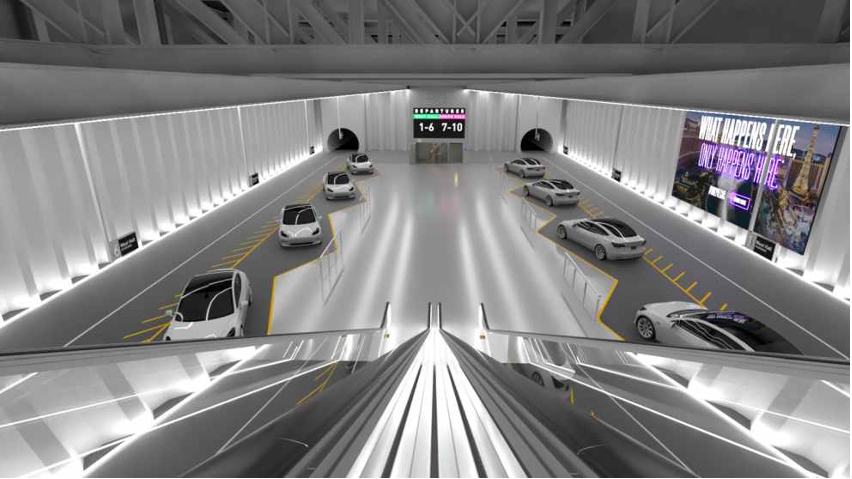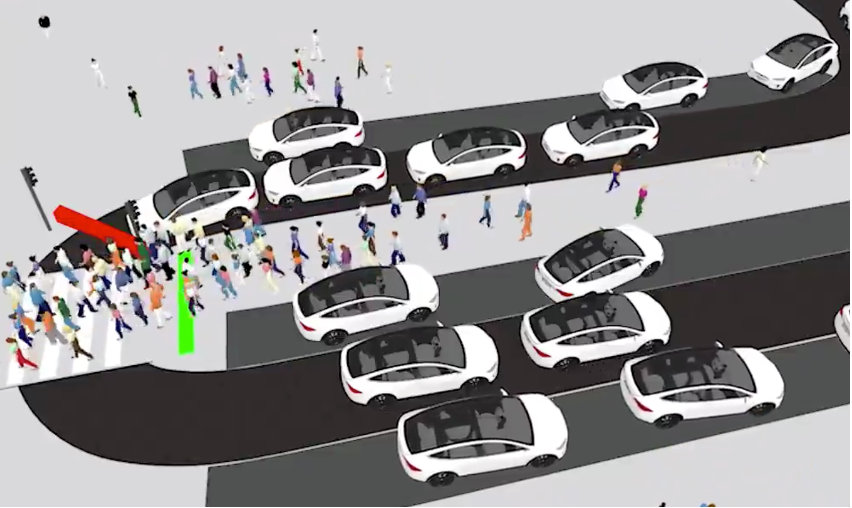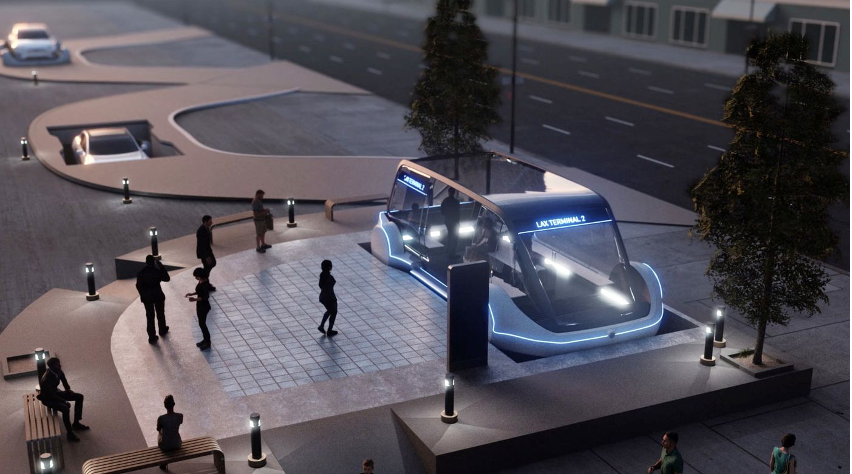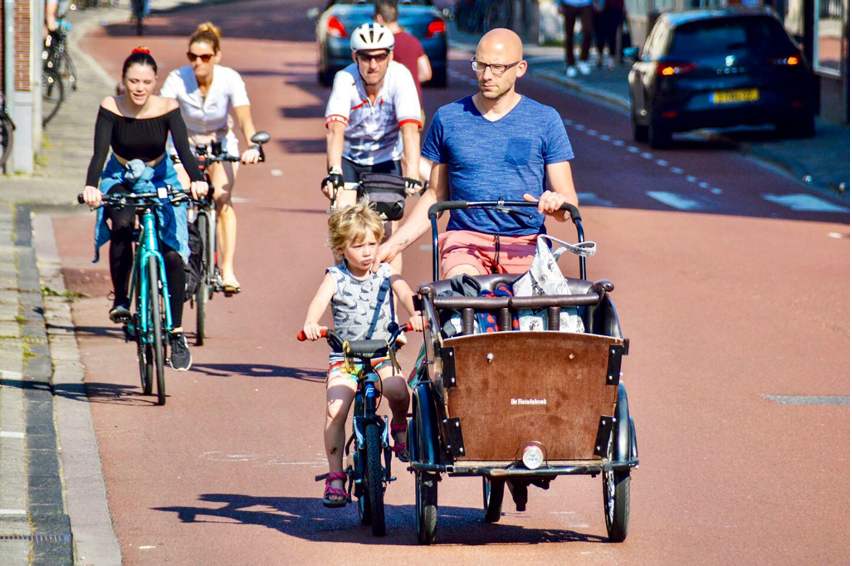Innovation / Innovative / Public transport
Cities: Don’t get distracted
Earlier this year, Elon Musk’s Boring Company won a contract to construct a people mover for the Las Vegas Convention Center. This people mover system is contractually required to move 4,400 people per hour. For comparison, a metro system can easily carry 30,000 people per hour or more. The Boring Company is in trouble however, because the system is expected to be able to move no more than 1,200 people per hour, which presents a significant problem to the Boring Company.

Credit: The Boring Company
In an effort to model how we could scale up the system to carry over 21,000 passengers per hour, an analysis was done using modified self-driving 12-seater vans. Besides the fact that the simulation shows many passengers being run over by the endless stream of Teslas that are supposed to carry them safely to their destination, the model is a great example of the simple beauty of public transport we take for granted.

Chaos at the modelled Las Vegas Station (Credit The Boring Company)
To move even two thirds of the passengers a standard metro system can move, we need 10 vehicles per minute(!) to arrive at the station. That is a van arriving at the station every 6 seconds. This, in combination with an arguably ambitious dwell time of a mere 40 seconds per vehicle may be able to get us to 21,000 passengers per hour, but can you imagine the chaos at the station? The vans will be bunching like crazy and will likely end up grinding the entire system to a halt within minutes.
Meanwhile, an old-fashioned self-driving metro system (of which there are plenty in existence right now) would be able to cope with this flow of passengers in a more predictable, comfortable and reliable manner. Vancouver’s ExpoLine, for example, can carry 30,000 people per hour. Today. No gimmicky pods or years of research required.
If the challenge is how to move people through our cities (or convention centres for that matter), we know the answers. It is not the hyperloop nor self-driving underground Tesla’s. To move people safely and efficiently, you need a high quality rail system that moves large numbers of people across the city, at a high frequency and at reasonable speed. Paired with excellent pedestrian and bicycle facilities to get people to and from the stations, a seamless transport system can and already exists in countless cities.

Credit: The Boring Company
We all know this, we can see it in action in hundreds of cities around the world. Yet we continue to get fixated on the new shiny thing that is presented to us by Venture Capitalists using slick videos and grand visions of the future. While we should thank the Boring Company for the push for innovation in tunnelling technology, maybe the Boring Company should become just a little bit more boring and focus on proven real world solutions instead of pie in the sky concepts that do not make sense when we start applying some real world physics and mathematics.

Credit: Modacity
So my hope for 2021 is that we can move beyond the shiny and new, and focus on real-world solutions that are proven to work. Don’t build hyperloops and Tesla-tunnels in cities where to this day it remains unsafe for a child to cross the road or a parent to ride a bike. And if this sounds like rocket science, get in touch. We can help!
 ">
">Lennart Nout
‘The interplay of different modalities within cities intrigues me. I am always looking for the best solution for the city and its inhabitants, while playing close attention to bikes. In the Netherlands and abroad I give workshops on the development of cycling culture, strategic network planning, street design and intersection design.’

